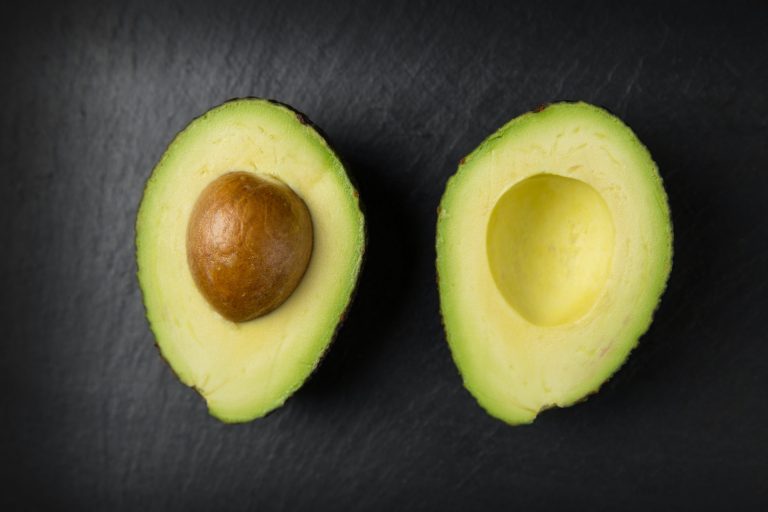The avocado is a large berry, containing a single, sizable seed. On the outside, it appears egg-shaped or spherical, with green, black, or brown, leathery skin. Its outer color is harmoniously contrasted by a bright green interior which, when ripe, acquires a buttery texture.
The mild flavor of avocados turns this fruit into a particularly versatile ingredient. When served with a hint of lemon and a touch of salt, avocados make the perfect savory snack—full of fats and vitamins. When blended into smoothies or baked into pastries, avocados are able to provide the desirable creaminess and moisture to a recipe, without affecting its flavor.
Unfortunately, the joy of having these exotic fruits readily available to us comes at an ever-increasing environmental cost. Thus, various restaurants are looking for ways to recreate the iconic avocado-based guacamole recipe, using more sustainable ingredients.
What does it take to grow avocados?
The avocado is native to the humid subtropical and tropical regions of central and northern South America, with Mexico being its leading producer. The most troublesome issue with growing avocados is that it requires a vast amount of water. Studies suggest that sixty gallons of water are needed to grow a single avocado.

The situation is compounded when the high demand for avocados gives rise to monoculture plantations. This method of intensive farming causes the soil to progressively lose its fertility as the same nutrients are continually being extracted. Nutrient deficiencies then cause crops to become more susceptible to pests and disease. Chemical pesticides and fertilizers applied to solve the problem affect other plant life, animals, and the environment as a whole.
Moreover, deforestation in favor of larger avocado plantations not only results in the destruction of animal habitats, but also in increased levels of carbon dioxide in the environment; since trees naturally remove carbon dioxide from the air and store it in their soil and tissues.

Success
You are now signed up for our newsletter
Success
Check your email to complete sign up
Soil erosion caused by deforestation can also result in flooding, mudslides and dangerous conditions for populations living nearby, whose access to clean water is also threatened by the high water demands of the avocado plant.
Green peas as an alternative to avocados
While producing a kilogram of avocados takes approximately two thousand liters of water, producing the same amount of peas requires around six hundred liters, or less than one third the volume of water. If pesticides are not used in the crop, pea cultivation does not cause significant damage to air, soil or surrounding populations.
Not only are peas more sustainable, but they also have the potential to provide the same texture experience as avocados in guacamole – and their similar green color is certainly a bonus! While the taste of avocado cannot be replicated exactly, the addition of a few key ingredients can help us achieve a fairly convincing flavor.

Tasty green pea guacamole recipe
Adapted from Forks over Knives
Paste ingredients:
- 2 cups of sweet green peas (thawed or fresh)
- 1 or 2 cloves of garlic
- Juice from 1 lime
- ½ teaspoon ground cumin
- ½ teaspoon sea salt or to taste
The add-ons
- ½ cup of finely diced tomato
- ½ cup red onion in small dices or 4 chopped green onions
- ½ cup chopped fresh cilantro
Optional ingredients:
- 1 jalapeño, seeded and minced (optionally broiled)
- ⅛ teaspoon hot sauce
- 1 tablespoon of sunflower seeds
Four simple steps:
- Blend the paste ingredients in a food processor until smooth.
- Transfer mixture into a medium bowl and incorporate the add-on ingredients using a fork. Add the optional minced jalapeño or hot sauce in this step.
- Cover and refrigerate for half an hour while flavors meld.
- Serve, topped with optional toasted sunflower seeds.

Peas and avocados in Chinese Medicine
Acupuncturist and Oriental Medicine expert Justin Hays explains on his website that avocados, with a sweet flavor and cool temperature, help tonify the blood and the yin energy of the body. These fruits are known for harmonizing the liver and lubricating the lung and intestines. Because of its benefits to blood circulation, avocados were used to treat menstrual irregularities and infertility in ancient times.
Sweet green peas are also able to tonify the yin energy of the body. According to Nicole Longstaff, a Canadian acupuncturist, this legume strengthens the spleen and the stomach thus aiding digestion. In addition, it lubricates the intestines and promotes diuresis favoring water regulation.

Nutritional value comparison
Comparing the two foods in nutritional terms, the U.S. Department of Agriculture has found that while both have a high fiber content, avocados have 17.9 times less sugar than peas but 28.9 times more saturated fats.
The legumes are shown to have significantly higher contents of Vitamin C, Vitamin A, Calcium, Protein and Iron; while avocados are a better source of Vitamin E, Omega-3 and Omega-6. However, both foods contain similar amounts of Potassium and Vitamin K.
READ ALSO:
- The “Magic” of Mushrooms
- Diet and Depression – Five Foods to Eat Up When You’re Down
- Wild Edibles – Part I
- Food for Thought – 5 Foods for Mental Clarity
While replacing avocados might not be high on your list of things to do, it is always good to try new things. Variety is not only the spice of life, it is also the key to a healthy diet. If you end up liking the results, both your wallet and the environment will thank you!















